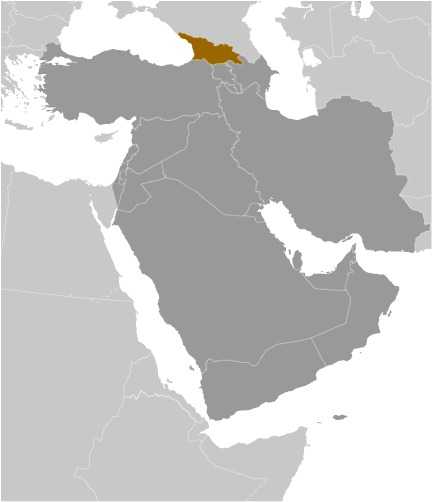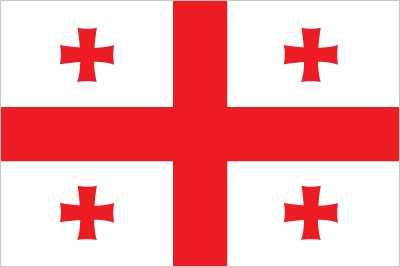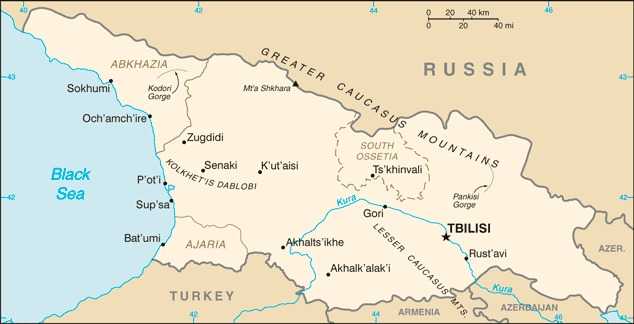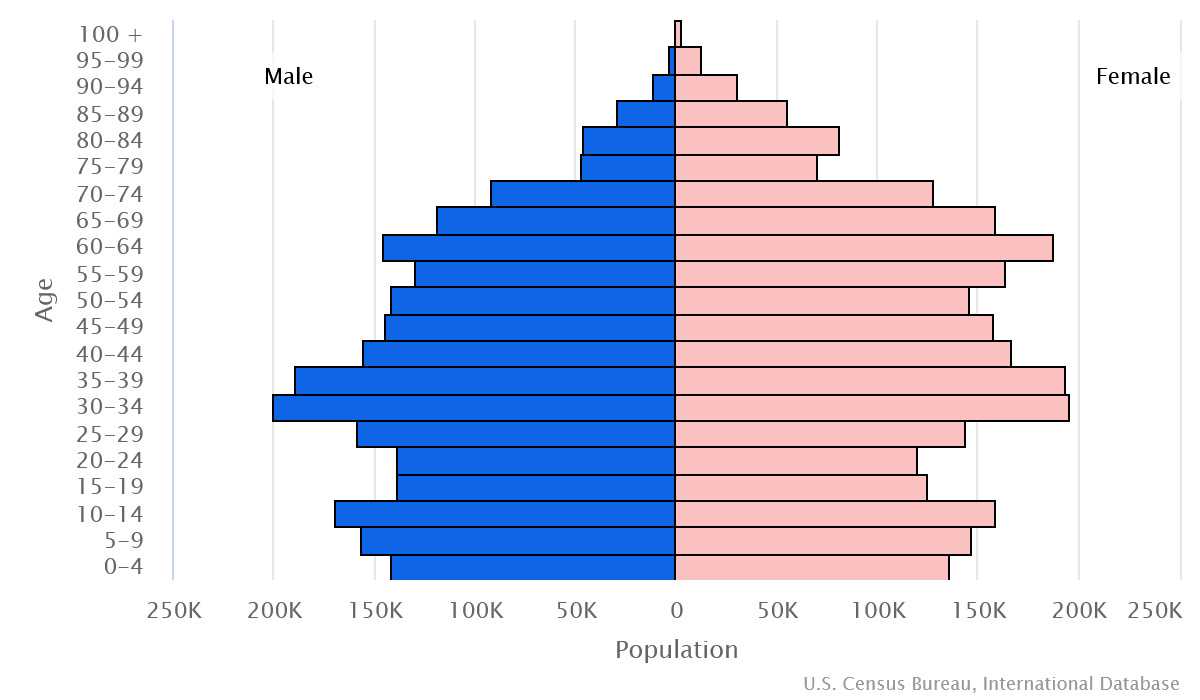Introduction
Background
Georgia once contained the ancient kingdoms of Colchis and Kartli-Iberia. Many powers have since dominated the country, including the Russian Empire in the 19th century. Georgia was forcibly incorporated into the Soviet Union in 1921 and regained its independence after the Soviet collapse in 1991. Georgia achieved EU candidate status in December 2023.
Geography
Area
total: 69,700 sq km
land: 69,700 sq km
water: 0 sq km
Climate
warm and pleasant; Mediterranean-like on Black Sea coast
Natural resources
timber, hydropower, manganese deposits, iron ore, copper, minor coal and oil deposits; coastal climate and soils allow for important tea and citrus growth
People and Society
Population
total: 4,900,961
male: 2,343,068
female: 2,557,893 (2024 est.)
Ethnic groups
Georgian 86.8%, Azeri 6.3%, Armenian 4.5%, other 2.3% (includes Russian, Ossetian, Yazidi, Ukrainian, Kist, Greek) (2014 est.)
Languages
Georgian (official) 87.6%, Azeri 6.2%, Armenian 3.9%, Russian 1.2%, other 1%; note - Abkhaz is the official language in Abkhazia (2014 est.)
Religions
Eastern Orthodox Christian (official) 83.4%, Muslim 10.7%, Armenian Apostolic Christian 2.9%, other 1.2% (includes Roman Catholic Christian, Jehovah's Witness, Yazidi, Protestant Christian, Jewish), none 0.5%, unspecified/no answer 1.2% (2014 est.)
Population growth rate
-0.5% (2024 est.)
Government
Government type
semi-presidential republic
Capital
name: Tbilisi
Executive branch
chief of state: President Salome ZOURABICHVILI (since 16 December 2018)
head of government: Prime Minister Irakli KOBAKHIDZE (since 8 February 2024); note - Irakli GARIBASHVILI resigned on 29 January 2024 to prepare for general elections in October 2024
Legislative branch
description: unicameral Parliament or Sakartvelos Parlamenti (150 seats statutory, 140 as of May 2023); 120 members directly elected in a single nationwide constituency by closed, party-list proportional representation vote and 30 directly elected in single-seat constituencies by at least 50% majority vote, with a runoff if needed; no party earning less than 40% of total votes may claim a majority; members serve 4-year terms)
Economy
Economic overview
main economic activities include cultivation of agricultural products, such as grapes, citrus fruits, and hazelnuts; mining of manganese, copper, and gold; producing alcoholic and nonalcoholic beverages
Real GDP (purchasing power parity)
$63.403 billion (2022 est.)
$57.434 billion (2021 est.)
$51.993 billion (2020 est.)
Real GDP per capita
$17,100 (2022 est.)
$15,500 (2021 est.)
$14,000 (2020 est.)
Agricultural products
milk, grapes, maize, potatoes, wheat, watermelons, tomatoes, tangerines/mandarins, barley, apples
Industries
steel, machine tools, electrical appliances, mining (manganese, copper, gold), chemicals, wood products, wine
Exports
$13.24 billion (2022 est.)
$8.086 billion (2021 est.)
$5.927 billion (2020 est.)
Exports - partners
China 13%, Russia 12%, Azerbaijan 11%, Turkey 7%, Ukraine 6% (2021)
Exports - commodities
copper, iron alloys, cars, wine, refined petroleum, nitrogen fertilizers, liquors (2021)
Imports
$15.665 billion (2022 est.)
$11.151 billion (2021 est.)
$8.967 billion (2020 est.)
Imports - partners
Turkey 17%, China 9%, Russia 9%, United States 7%, Azerbaijan 6% (2021)
Imports - commodities
cars, refined petroleum, copper, packaged medicines, natural gas (2019)
Exchange rates
laris (GEL) per US dollar -
Exchange rates:
2.916 (2022 est.)
3.222 (2021 est.)
3.109 (2020 est.)
2.818 (2019 est.)
2.534 (2018 est.)
Page last updated: Wednesday, May 01, 2024




